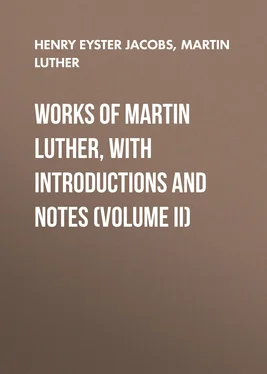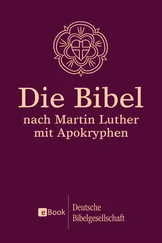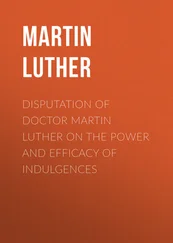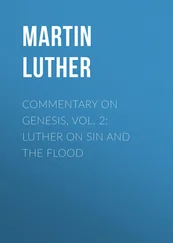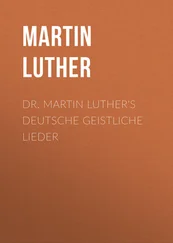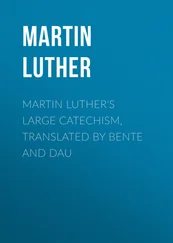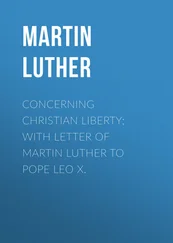Henry Eyster Jacobs - Works of Martin Luther, with Introductions and Notes (Volume II)
Здесь есть возможность читать онлайн «Henry Eyster Jacobs - Works of Martin Luther, with Introductions and Notes (Volume II)» — ознакомительный отрывок электронной книги совершенно бесплатно, а после прочтения отрывка купить полную версию. В некоторых случаях можно слушать аудио, скачать через торрент в формате fb2 и присутствует краткое содержание. Жанр: foreign_prose, foreign_religion, Философия, foreign_psychology, foreign_antique, на немецком языке. Описание произведения, (предисловие) а так же отзывы посетителей доступны на портале библиотеки ЛибКат.
- Название:Works of Martin Luther, with Introductions and Notes (Volume II)
- Автор:
- Жанр:
- Год:неизвестен
- ISBN:нет данных
- Рейтинг книги:3 / 5. Голосов: 1
-
Избранное:Добавить в избранное
- Отзывы:
-
Ваша оценка:
- 60
- 1
- 2
- 3
- 4
- 5
Works of Martin Luther, with Introductions and Notes (Volume II): краткое содержание, описание и аннотация
Предлагаем к чтению аннотацию, описание, краткое содержание или предисловие (зависит от того, что написал сам автор книги «Works of Martin Luther, with Introductions and Notes (Volume II)»). Если вы не нашли необходимую информацию о книге — напишите в комментариях, мы постараемся отыскать её.
Works of Martin Luther, with Introductions and Notes (Volume II) — читать онлайн ознакомительный отрывок
Ниже представлен текст книги, разбитый по страницам. Система сохранения места последней прочитанной страницы, позволяет с удобством читать онлайн бесплатно книгу «Works of Martin Luther, with Introductions and Notes (Volume II)», без необходимости каждый раз заново искать на чём Вы остановились. Поставьте закладку, и сможете в любой момент перейти на страницу, на которой закончили чтение.
Интервал:
Закладка:
Martin Luther
Works of Martin Luther, with Introductions and Notes (Volume II)
A TREATISE CONCERNING THE BLESSED SACRAMENT OF THE HOLY AND TRUE BODY OF CHRIST AND CONCERNING THE BROTHERHOODS
INTRODUCTION
This treatise belongs to a series of four which appeared in the latter half of the year 1519, the others treating of the Ban, Penance, and Baptism. The latter two with our treatise form a trilogy which Luther dedicates to the Duchess Margaret of Braunschweig and Lüneburg.
He undertakes the work, as he says, "because there are so many troubled and distressed ones—and I myself have had the experience—who do not know what the holy sacraments, full of all grace, are, nor how to use them, but, alas! presume upon quieting their consciences with their works, instead of seeking peace in God's grace through the holy sacrament; so completely are the holy sacraments obscured and withdrawn from us by the teaching of men." 1 1 See Clemen, 1, p. 175.
In a letter to Spalatin 2 2 Enders, II, no. 254. Smith, Luther's Correspondence , I, no. 206.
of December 18, 1519, he says that no one need expect treatises from him on the other sacraments, since he cannot acknowledge them as such.
A copy from the press of John Grünenberg of Wittenberg reached Duke George of Saxony by December 24, 1519, who on December 27th already entered his protest against it with the Elector Frederick and the Bishops of Meissen and Merseburg 3 3 Gess, Akten und Briefe zur Kirchenpolitik Herzog Georgs von Sachsen , Leipzig, 1905.
. Duke George took exception particularly to Luther's advocacy of the two kinds in the Communion 4 4 See below, p. 9.
. This statement of Luther, however, was but incidental to his broad and rich treatment of the subject of the treatise.
It was Luther's first extended statement of his view of the Lord's Supper. As such it is very significant, not only because of what he says, but also because of what he does not say. There is no reference at all to that which was then distinctive of the Church's doctrine, the sacrifice of the mass. Luther has already abandoned this position, but is either too loyal a church-man to attack it or has not as yet found an evangelical interpretation of the idea of sacrifice in the mass, such as he gives us in the later treatise on the New Testament 5 5 In this edition, Vol. I, pp. 294-336. See especially pp. 312 ff.
. However, already in this treatise he gives us the antidote for the false doctrine of sacrifice in the emphasis laid upon faith, on which all depends 6 6 See below, pp. 19, 25.
. The object of this faith, however, is not yet stated to be the promise of the forgiveness of sins contained in the Words of Institution, which are a new and eternal testament 7 7 Treatise on the New Testament , Vol. I, pp. 297 ff.
.
The treatise shows the influence of the German mystics 8 8 See Köstlin, Luther's Theologie , I, 292 f.; also Hering, Die Mystik Luthers , Leipzig, 1879, pp. 171-174.
on Luther's thought, but much more of the Scriptures which furnish him with argument and illustration for his mystical conceptions. Christ's natural body is made of less importance than the spiritual body 9 9 See below, p. 23.
, the communion of saints; just as in the later treatise on the New Testament the stress is placed on the Words of Institution with their promise of the forgiveness of sins. Luther does not try to explain philosophically what is inexplicable, but is content to accept on faith the act of the presence of Christ in the sacrament, "how and where,—we leave to Him." 10 10 See below, p.20.
Of interest is the emphasis on the spiritual body, the communion of saints. Luther knows that although excommunication is exclusion from external communion, it is not necessarily exclusion from real spiritual communion with Christ and His saints 11 11 See Treatise concerning the Ban , below, p. 37.
. No wonder, then, that he can later treat the papal bull with so much indifference; it cannot exclude him from the communion of saints.
The treatise consists of three main divisions: sections 1 to 3 treating of the outward sign of the sacrament; sections 4 to 16, of the inner significance; sections 17 to 22, of faith. Added to this is the appendix on the subject of the brotherhoods or sodalities, associations of laymen or charitable and devotional purposes. Of these there were many at this time, Wittenberg alone being reported as having twenty-one. Luther objects not only to their immoral conduct, but also to the spiritual pride which they engendered. He finds in the communion of saints the fundamental brotherhood instituted in the holy sacrament, the common brotherhood of all saints.
The modern world needs to have these truths driven home anew, and, barring a few scholastic phrases here and there, cannot find them better expressed than in the remarkably elevated and devotional language of Luther in this treatise.
The text of the treatise is found in the following editions: Weimar Ed., vol. ii, 742; Erlangen Ed., vol. xxvii, 28; Walch Ed., Vol. xix, 522; St. Louis Ed., xix, 426; Clemen, vol. i, 196; Berlin Ed., vol. iii, 259.
Literature besides that mentioned:
Tschackert, Enstehung der lutherischen und reformierten Kirchenlehre , 1910, pp. 174-176.
K. Thieme, Entwicklung und Bedeutung der Sakramentslehre Luthers , Neueu Kirchl. Zeitschrift, XII (1901), Nos. 10 and 11.
F. Graebke, Die Konstruktion der Abendmahlslehre Luthers in ihre Entwicklung dargestellt , Leipzig 1908.
J. J. SCHINDEL.
Allentown, PA.
A TREATISE CONCERNING THE BLESSED SACRAMENT OF THE HOLY AND TRUE BODY OF CHRIST AND CONCERNING THE BROTHERHOODS
1. Like the sacrament of holy baptism 12 12 See Treatise on Baptism , Vol. I, pp. 56 ff.
the holy sacrament of the altar, or of the holy and true body of Christ, has three parts which it is necessary or us to know. The first is the sacrament, or sign, the second is the significance of this sacrament, the third is the faith required by both of these; the three parts which must be found in every sacrament. The sacrament must be external and visible, and have some material form; the significance must be internal and spiritual, within the spirit of man; faith must apply and use both these.
[Sidenote: The First Part of the Sacrament: the Sign]
2. The sacrament, or outward sign, is in the form of bread and wine, just as baptism has as its sign water; although the sign is not simply the form of bread and wine, but the use of the bread and wine in eating and drinking, just as the water of baptism is used by immersion or by pouring. For the sacrament, or sign, must be received, or must at least be desired, if it is to work a blessing. Although at present the two kinds are not given the people daily, as of old,—nor is this necessary,—yet the priesthood partakes of it daily in the sight of the people, and it is enough that the people desire it daily and receive one kind at the proper time, as the Christian Church ordains and offers 13 13 Note the advance in The Babylonian Captivity , below, pp. 178 ff.
.
3. I deem it well, however, that the Church in a general council should again decree 14 14 Cf. Babylonian Captivity , below, p. 186.
that all persons, as well as the priests, be given both kinds. Not that one kind were insufficient, since indeed the simple desire of faith suffices, as St. Augustine says: "Why preparest thou stomach and teeth? Only believe and thou hast already partaken of the sacrament"; 15 15 Cf. Sermo , 112, cap. 5 (Migne, xxxviii, 615).
but because it would be meet and right that the form, or sign, of the sacrament be given not in part only, but in its entirety, just as I have said of baptism 16 16 See Vol. I, p. 56.
that it were more fitting to immerse than to pour the water, for the sake of the completeness and perfection of the sign. For this sacrament signifies the complete union and the undivided fellowship of the saints, as we shall see, and this is poorly and unfittingly indicated by only one part of the sacrament. Nor is there as great a danger in the use of the cup as is supposed, since the people seldom go to this sacrament, and Christ was well aware of all future dangers 17 17 E. g., the danger of spilling the wine.
, and yet saw it to institute both kinds or the use of all His Christians.
Интервал:
Закладка:
Похожие книги на «Works of Martin Luther, with Introductions and Notes (Volume II)»
Представляем Вашему вниманию похожие книги на «Works of Martin Luther, with Introductions and Notes (Volume II)» списком для выбора. Мы отобрали схожую по названию и смыслу литературу в надежде предоставить читателям больше вариантов отыскать новые, интересные, ещё непрочитанные произведения.
Обсуждение, отзывы о книге «Works of Martin Luther, with Introductions and Notes (Volume II)» и просто собственные мнения читателей. Оставьте ваши комментарии, напишите, что Вы думаете о произведении, его смысле или главных героях. Укажите что конкретно понравилось, а что нет, и почему Вы так считаете.
